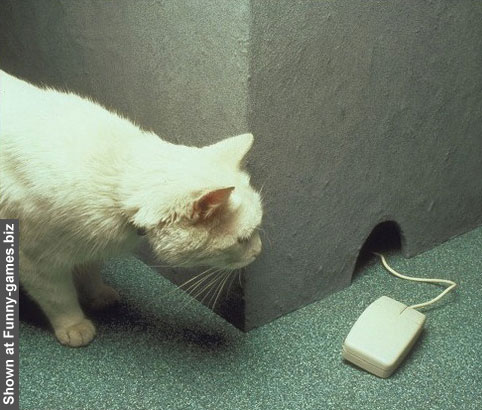How To Be Good At Archery Game Pigeon
- How To Be Good At Archery Game Pigeon Forge
- How To Be Good At Archery Game Pigeon Mo
- How To Win At Archery Game Pigeon
How far is too far? - Archery

Practicing a long-range shot is very different from taking a long-range shot while hunting.
How to Start Archery. Archery has been around, both for sport and hunting, for centuries, and it remains popular today. While it is not too hard to get involved in, it requires more than sports like soccer or basketball to get started. To be good at 5. It is clear that the accurate number of users can be counted fairly approximately, nobody knows exactly how many people use the.
One way is being very good at aiming but there are alternatives available. The demonstrated method requires a glitch called swordless Link (find. Archery Rules Photo credit: ProAdventure (Source) Archery – that is, the use of a stringed bow to propel arrows towards a target – is thought to go back thousands of years – possibly even as far as the stone age of 20,000 BC – with bows and arrows us. Archery is just a fun hobby all-around, and if we ever face a major disaster scenario where ammo might get harder to come by, a good bow is going to be worth its weight in gold. Unfortunately a lot of beginning archers pick up some bad habits along the way that keep them from realizing their full potential.
I started bowhunting as a way to become a better hunter and enjoy the outdoors. Bowhunting has always been, and should always be, about getting close to animals. There is no other rush that compares to getting under 40 yards from your dream animal after a well-executed stalk.
Remember when an 80 yard shot was practically unheard of for bowhunters? Advances in arrow and bow technology have made long-distance shots more and more commonplace, but this trend raises another equally important question in the bowhunting community: how far is too far? What’s changed for the sport that traditionally has prided itself on getting closer to animals for a successful harvest? What’s the line between hunting and archery? Has it been irrevocably crossed?
Practicing at a distance like this will make your 30 yard shot much more effective.
As with so many hunting uncertainties, part of what’s at stake in these long-range bowhunting questions comes down to hunting ethics. Long-range shots tend to rely on minute sight adjustment, positioning and sleek, highly calibrated compound bows. A minor flaw in form or hitch in breathing that causes an arrow to be off by only a few inches at 30 yards magnifies to a question of feet for a long-range shot. Shifting winds can also cause an arrow to go astray instead of finding its mark. Long distance shots are deeply unforgiving, which only intensifies given the rush of adrenaline on the hunt. As distances get longer, it becomes more difficult to determine the angle of the animal and the amount of penetration that your bow will have at that distance. You may be able to hit a target at 80, but does your bow pack enough momentum and kinetic energy for such a shot?
“Bowhunting used to be about being a better hunter; now it’s about being a better shot. Bowhunters used to brag about harvesting a buck from mere steps away, but now the most praise seems to go to the guy that makes the longest kill shot,” writes bowhunter Mark Huelsing on his blog. The refrain across the hunting community repeats the need for practice on the range well before the season begins. As stated in my recent article for increasing your shot distance, bowhunters should practice shots 40 to 50 yards beyond their target range, but dial back when hunting to ensure accuracy. Ethical shooting distance is different for every person and every bow setup. It all depends on what distance the bowhunter is confident they can make a clean shot. Above all things, bowhunters should not take a shot unless they are 100% certain that they can make the arrow fly where it needs to go.
Having the right equipment is one thing, but making the shot under real hunting conditions is totally a different thing.
Photo Credit: Brady Miller, goHUNT.com
Practice in a variety of conditions and positions is necessary for successful long-range shots on the hunt. Once in the field, responsible hunters know their limitations and don’t take shots outside their accurate shooting range. Each bowhunter is vastly different, but your maximum effective distance is a distance where you can consistently put arrows in the kill zone shot after shot. This echoes advice repeated across pro shops, hunting forums, blogs and websites. For some hunters this can be 80 yards, for others it remains firmly under 35 yards. It takes a lot of discipline to abide by your maximum effective range when you have the animal of a lifetime in front of you. Passing on a deer might be tough, but if you have to second guess yourself, then you probably shouldn't be shooting that far. Bowhunters need the right bow, the right optics, the right bow accessories and plenty of practice to effectively shoot further distances.
I watched my friend stalk to within 5 yards of this young mule deer before bumping it out of its bed.
Hunters also talk about animals starting to change their behaviors because of long-range shooting. While it’s certainly possible that deer, elk and other animals are recalibrating their notions of what constitutes a “safe” distance from a hunter, it will probably take years of study to make researched conclusions along the lines of those published about elk movements and hunter access in The Journal of Wildlife Management. If the focus continues to emphasize longer and longer distances, the millennia-old practice of bowhunting might change completely for both hunters and animals alike. Beretta silver pigeon game gun.
In the end, everyone has their limit on distance with a bow. Find your limit and have fun. Bowhunting has always been about getting close to animals. But .. has close gone too far?
How-To Share:Competitive archery is rewarding and lots of fun, but as you gain experience you’ll want to do more than just participate. In the words of NFL coach Herm Edwards, “You play to win the game.”
If you’ve set your sights on winning a tournament, you must master the sport’s physical and mental demands. Then you must gain experience by practicing those elements in competition. After that, you could be on your way to the podium and a gold medal.
Winning Form
Once you have a repeatable form, practice it until it becomes part of your subconscious. After a few thousands repetitions, your shot will feel as natural as walking. Photo Credit: USA ArcheryGood shooting requires consistency, and that starts with your form, which is the process of shooting your bow naturally shot after shot. Classic archery form combines good posture and body mechanics with a consistent grip, stance and anchor point. No two bodies are alike, so it’s important to work with a coach to find the form that works best for your body. Once you’ve achieved a repeatable form, practice until it’s part of your subconscious. After a few thousands repetitions, your shots will feel as natural as walking.
A Mental Game Plan
A strong mental game is important because it gives you the ability to execute your good form when it counts. Photo Credit: USA ArcheryGreat form takes you far, but the best archers also excel at archery’s mental game. If you shoot great in practice but not as well on league nights or in other competitions, your form isn’t the culprit. Your mental game needs work. The key is to shoot like you’re not trying to win. Lean on mental strategies to bring home the gold.
A strong mental game helps you execute your good form when it counts. Play clay pigeon shooting games. Much like your form, your mental strategy must match your personality. Instructors can help you develop a strategy, as can books like “With Winning in Mind” by Lanny Bassam, and “Archery: Think and Shoot Like a Champion,” by Terry Wunderle.
One mental game plan is to repeat a positive phrase while you shoot. This keeps you focused and stifles negative thoughts. Another strategy is a form checklist, which ensures you complete all the necessary steps to make each shot good. Once you find a mental strategy that works well, use it every time you shoot, especially in competitions.
Practicing for Competition
If you can’t get to more competitions, you can replicate the experience in practice. Mimic the aspects of competition like scoring, a shot clock and shooting around people. Photo Credit: USA ArcheryThe best way to practice for competition is to shoot in every tournament possible. The more you shoot in pressure situations, the easier it becomes. Before you know it, competition feels much like practice.
If you can’t compete more often, you can replicate competition in practice. Use a shot clock, shoot with people around you, and score each round before pulling your arrows. You can even add pressure on yourself by placing fun wagers with friends. The more realistic your practice sessions, the better you’ll shoot in competition.
Winning at archery isn’t easy. It takes the right skills and lots of hard work to compete effectively. If you’re ready to get serious about archery, find a coach at the archery shop and clear your schedule for lots of disciplined practice.
Share:Related Articles
If you liked this one, read these next
Archery Questions You Always Wanted to Ask
5 Things You Need to Know About Visiting an Archery Store
5 Great Strength And Conditioning Exercises For Archery

Find a store near you.
Where to ShootComment on this Article
Archery 101
Learn the basics here, from the different styles of archery to how to choose the bow that's right for you.
Get StartedHow To Be Good At Archery Game Pigeon Forge
Subscribe
Stay up to date on everything archery with our newsletter.
Where to Shoot
How To Be Good At Archery Game Pigeon Mo
Locate archery stores and ranges in your neck of the woods.